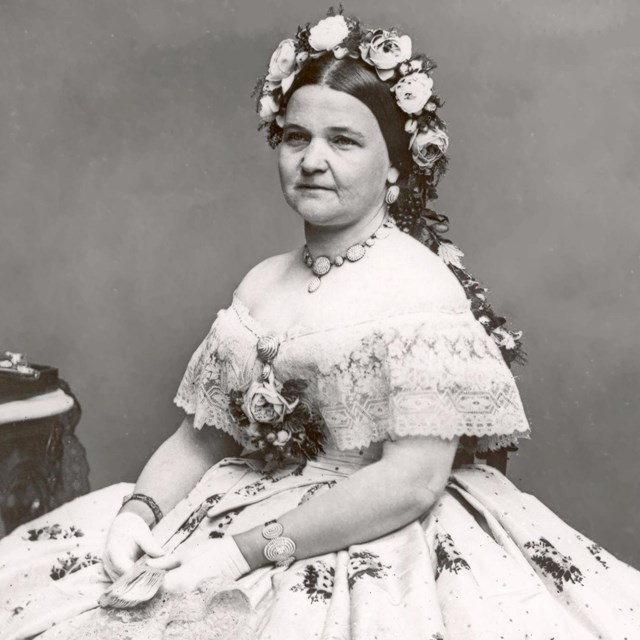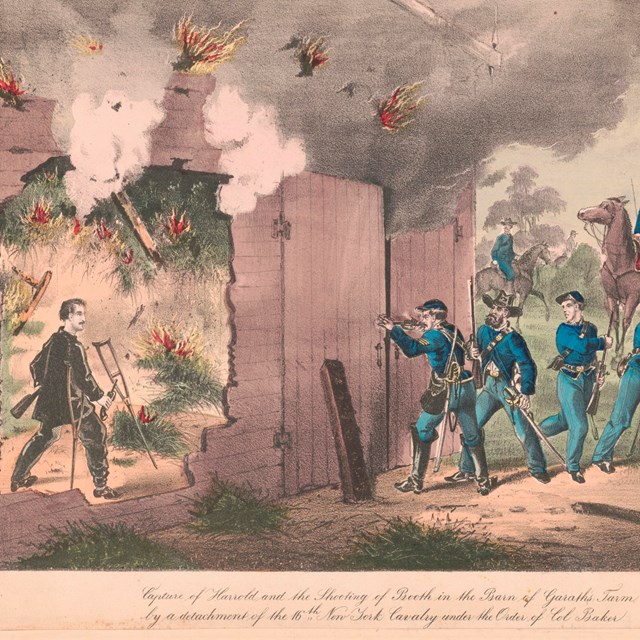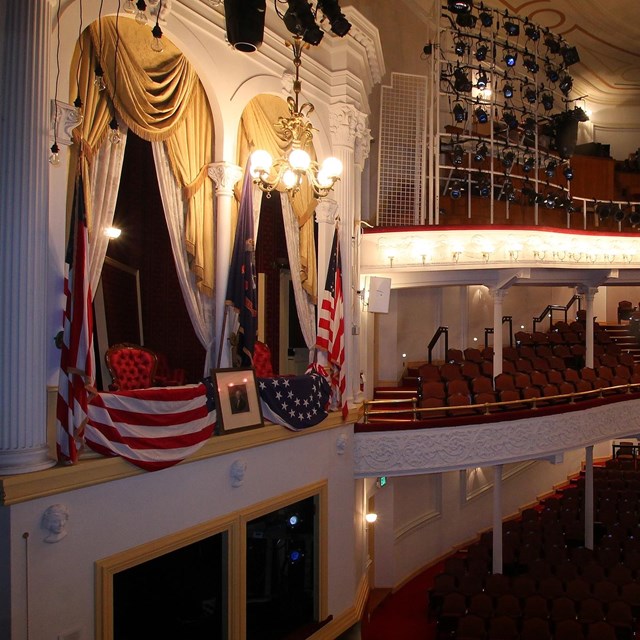
Library of Congress Where was President Lincoln shot? Did he ever regain consciousness?The bullet entered the left back side of Abraham Lincoln's head, about an inch to the left of the medial line of the skull and at the level of his ear. The bullet passed through his brain and lodged behind one of his eyes. The doctors who performed the autopsy on Lincoln provided varying accounts, with one doctor writing that the bullet had traveled straight forward and had lodged in the left side of Lincoln’s brain. Other physicians claimed that the bullet stopped behind Lincoln's right eye. The force of the initial impact also fractured both orbital plates of the frontal plate of the skull. Skull fragments propelled into the brain by the bullet caused additional damage.No, the president never regained consciousness before his death. Could Lincoln have been saved with modern medicine?Some medical specialists have suggested that with advances in modern medicine, Lincoln’s life could have been saved if he were taken immediately to a trauma center. Other specialists are certain that Lincoln would not have survived even with today's technology. If the bullet traveled over the centerline of the brain and caused damage in both halves, his chances would be very slim. Anybody surviving a similar wound today would experience considerable neurological problems. Paralysis, partial blindness, and difficulties with speaking, writing, and hand-eye coordination would all be likely consequences from the injury. In any case, in 1865, the wound was definitely 100% fatal. Why didn’t they bring Lincoln to a hospital?Two surgeons arrived in the box very soon after the president was shot. Both Dr. Charles Leale and Dr. Charles Sabin Taft feared that President Lincoln might die en-route within a carriage to another site. They knew that the combination of poor road conditions and the bullet still present in Lincoln's brain would likely prove fatal. The closest hospital at the time was the Armory Square Hospital. This facility stood on the south side of the National Mall, near where the Smithsonian Air and Space Museum is now located. This distance from Ford’s Theatre was just over one-half of a mile. In the Civil War era, hospitals were considered unhealthy places where one goes to die and were only used as a last resort. Persons of means would be taken back to their houses where their personal physician would have made a house call. The doctors at Ford's Theatre would have tried to take Abraham Lincoln to the White House if they could have. That trip, about ¾ of a mile, would likely have proven fatal as well. Where is the actual bullet that killed President Lincoln?The original .44 caliber bullet is on public display today at the National Museum of Health and Medicine (NMHM). That museum stands at 2500 Linden Lane, Silver Spring, Maryland. It is displayed alongside some of Lincoln's skull fragments, as well as the probe doctors used to search the wound for the bullet. All three were transferred to the NMHM’s predecessor organization from the storage vaults of the Lincoln Museum in 1956. 
Library of Congress What happened to Mrs. Lincoln after the shooting?When John Wilkes Booth shot Abraham Lincoln, Mrs. Lincoln became understandably hysterical and terrified. She followed the doctors tending the president and the soldiers carrying him out onto the street. She continued following them into the Petersen Boarding House across from the theater. Once in the house, she waited in the front parlor, only occasionally being allowed to venture into the room where the president was dying. Throughout the night, friends and her son Robert arrived and tried to comfort and console her. She was not in the room when President Lincoln died.Following the death of Lincoln, the newly sworn-in President Andrew Johnson graciously allowed Mary Lincoln to live inside one of the rooms of the White House while in seclusion and in mourning. This lasted for around a month. Following that, Mary Lincoln largely remained in seclusion from the rest of society except for the immediate members of her family. Mary Todd’s grief and depression was often overpowering, and she dressed in black the rest of her life. For a period of time, she travelled abroad with her son Tad, who tragically died of tuberculosis in 1871. Around 1875, Robert Todd had Mary briefly committed to an asylum, largely for her safety. Mary sadly never forgave him, and both she and Robert remained estranged. Mary spent the last remaining years of her life living with her sister in Illinois and, largely broken in spirit, died in 1882 at age 63. What happened to Major Rathbone and Miss Harris, the Lincolns’ guests, after the shooting?Major Rathbone, who sat with the Lincolns inside the box, tried to stop Booth and was stabbed for his trouble. Despite the wound, he yelled out “stop that man, somebody stop that man!” He then made his way to the door of the box to remove the wooden piece Booth had use as a wedge to hold the door closed. He pleaded for a surgeon and let Dr. Charles Leale enter the box. When the president was removed from the theatre, Rathbone escorted Mrs. Lincoln and Clara Harris over to the Petersen House. It was there that he fainted in the front hallway due to loss of blood and was laid onto the floor. Doctors then treated his wound and summoned a carriage to take him back to his home on Lafayette Square. Much of the blood throughout the scene at Ford’s and the Petersen House belonged to Rathbone, as Lincoln’s wound bled very little.Clara Harris and Major Rathbone married and had three children. They moved to the German province of Hanover in 1882 when Rathbone was appointed as diplomatic consul. Rathbone never really recovered from the emotional trauma of that night at Ford’s Theatre, and his behavior grew increasingly erratic. In 1883, Major Rathbone shot his wife in a fit of madness, leaving three young children to be raised by their mother’s sister. Rathbone was committed to an asylum for the insane and remained in the institution until his death in 1911. One of their sons, Henry Riggs Rathbone, entered politics and represented Illinois in the House of Representatives. In Congress, Rathbone advocated preserving the stories of Abraham Lincoln and of his parents. He sponsored a bill that saw the US government purchase the Osborn Oldroyd Lincoln Memorial Collection. These artifacts, then on display in the historic Petersen House, are now part of the Ford's Theatre Museum collection today. 
Library of Congress What happened to Booth after the assassination?John Wilkes Booth spent almost two weeks on the run, traveling through southern Maryland and across the Potomac River into Virginia. Twelve days after the assassination, Union forces closed in on him. A cavalry detachment of 26 soldiers from the 16th New York Cavalry, under the command of Col. E.J. Conger, found John Wilkes Booth and one of his accomplices, David Herold. The two men were hiding in a tobacco barn on a farm owned by Richard Garrett near Bowling Green, Virginia. The soldiers surrounded the barn and the assassin. When Booth refused to surrender, they set the building on fire. David Herold surrendered to the soldiers, but Booth stayed in the barn. Sergeant Boston Corbett of the 16th New York Cavalry peered through an open slat in the burning barn. Thinking that John Wilkes Booth was raising his rifle to shoot, Sgt. Corbett drew his own pistol and fired it through the open slat of the barn. Corbett's bullet hit Booth in the neck, paralyzing the assassin. He died a few hours later, in the early morning just before sunrise on April 26, 1865. His body was sewn into an army blanket and placed on a tugboat for transport to the Washington Navy Yard, about 80 miles to the north. The autopsy of John Wilkes Booth was held on April 27. A handful of people who knew Booth by sight identified his body during the autopsy. The doctors removed a small part of Booth’s spine, containing the bullet that tore through his body. This bone fragment was once on display at the Army Medical Museum that was on the rebuilt third floor of Ford’s Theatre. Today, it is part of the collection of the National Museum of Health and Medicine in Silver Spring, MD. To learn more about John Wilkes Booth's escape, click here for a day-by-day look at the assassin's time on the run. Want to Learn More?
|
Last updated: November 24, 2024



